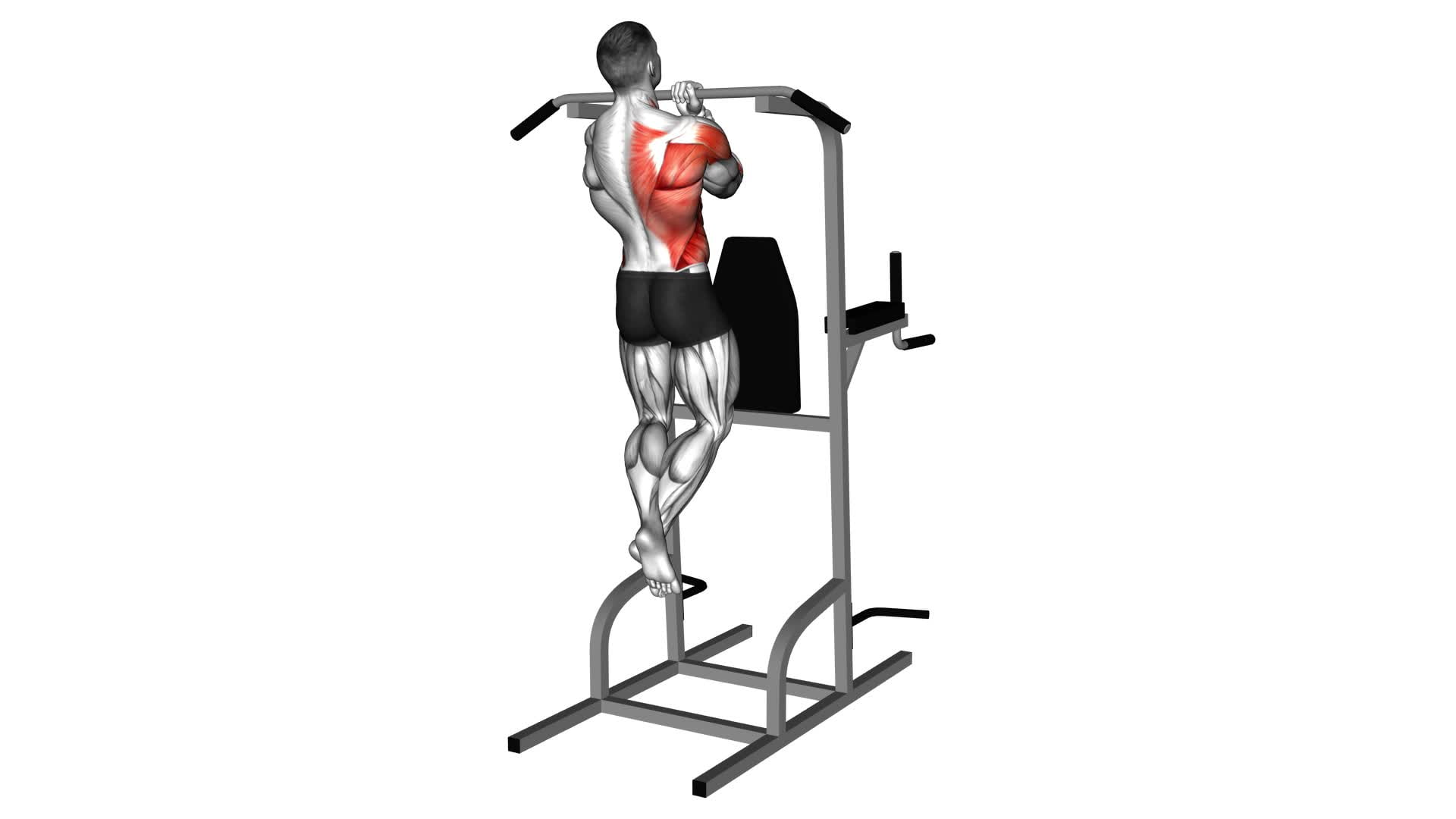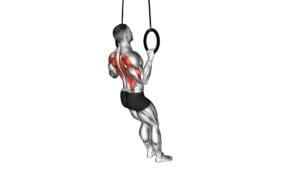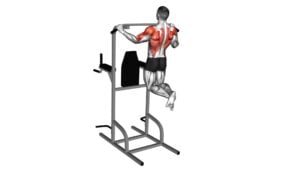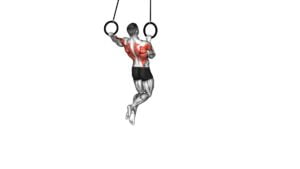Uneven Pull-up (male) – Video Exercise Guide & Tips

Looking to level up your upper body strength? With the uneven pull-up, you'll target your back and arms like never before.
Watch This Exercise Video
This video exercise guide and tips will show you how to properly perform this challenging exercise.
With just a few simple variations and progressions, you'll be on your way to mastering the uneven pull-up.
Maximize your results and unlock your full potential with this effective workout.
Get ready to take your fitness journey to new heights.
Key Takeaways
- Uneven pull-ups target muscles in a unique and challenging way.
- They increase upper body strength, stability, and muscle coordination.
- Proper form and technique are crucial to maximize benefits and minimize the risk of injury.
- Gradually increasing difficulty and incorporating rest days are important for seeing progress and maximizing results.
Benefits of the Uneven Pull-Up
One benefit of the uneven pull-up is that it targets your muscles in a unique and challenging way, helping to increase upper body strength and stability. The uneven pull-up is a variation of the traditional pull-up exercise where one hand is higher than the other on the bar. This slight imbalance forces your muscles to work harder to maintain control and balance throughout the movement. As a result, the uneven pull-up activates a wide range of muscles in your upper body, including your back, shoulders, arms, and core.
By engaging multiple muscle groups simultaneously, the uneven pull-up helps to develop overall upper body strength and improve muscle coordination. The uneven grip also places greater emphasis on the muscles on one side of your body, leading to more balanced muscle development. In addition, the challenging nature of the exercise helps to improve stability and control, as you have to work harder to maintain proper form and control the movement.
Equipment Needed for the Exercise
To perform the uneven pull-up exercise, you'll need minimal equipment. The main equipment required for this exercise is a pull-up bar. There are various options available for pull-up bars, including doorway pull-up bars, wall-mounted pull-up bars, and freestanding pull-up bars. Choose a pull-up bar that's sturdy and can support your body weight.
If you don't have access to a pull-up bar, you can also use other equipment options such as gymnastics rings or TRX straps. These provide a similar pulling motion and can be adjusted to different heights, allowing you to perform the uneven pull-up exercise effectively.
When using the equipment, it's important to avoid some common mistakes. One common mistake is using a bar that's too high or too low, which can negatively impact your form and make the exercise less effective. Another mistake is gripping the bar too tightly, which can lead to unnecessary strain on your wrists and forearms. Instead, aim for a relaxed grip while maintaining control throughout the movement.
By having the right equipment and avoiding common mistakes, you can perform the uneven pull-up exercise safely and effectively.
Remember to always warm up properly before starting any exercise routine and consult a fitness professional if you have any concerns or questions.
Proper Form and Technique
To perform the uneven pull-up exercise with proper form and technique, focus on maintaining a controlled and smooth movement throughout the exercise. Here are some tips to help you execute the exercise correctly:
- Grip: Place your hands on the bar with an overhand grip, slightly wider than shoulder-width apart. Make sure your palms are facing away from you.
- Position: Position yourself under the bar with one hand on the higher bar and the other hand on the lower bar. Your body should be hanging freely.
- Pulling motion: Start the exercise by pulling yourself up using your arms, back, and shoulders. Keep your elbows close to your body and focus on pulling your chest towards the bar. Avoid using momentum or swinging your body.
- Lowering phase: Slowly lower yourself back down to the starting position, maintaining control throughout the movement. Avoid dropping or letting your body swing.
Common mistakes to avoid include using improper grip, not maintaining a controlled movement, and relying too much on momentum. These mistakes can lead to common injuries such as strains or muscle imbalances.
By following these guidelines, you can perform the uneven pull-up exercise with proper form and technique, minimizing the risk of injury.
Now, let's explore some variations and progressions to keep challenging yourself in your pull-up routine.
Variations and Progressions
To advance your pull-up routine, try incorporating different variations and progressions to challenge yourself further. There are several advanced variations of the uneven pull-up that you can try. One variation is the one-arm pull-up, where you perform a pull-up using only one arm. This requires a tremendous amount of upper body strength and stability.
Another variation is the weighted pull-up, where you add weight to your body using a weight vest or a belt with weight plates. This increases the difficulty of the exercise and helps to build even more strength.
When attempting these advanced variations, it's important to be aware of common mistakes that can hinder your progress. One common mistake is using momentum to complete the pull-up. This reduces the effectiveness of the exercise and can lead to injury. Make sure to use controlled movements and avoid swinging or jerking your body.
Another mistake isn't maintaining proper form throughout the exercise. Keep your core engaged, your shoulders pulled down and back, and your elbows close to your body. This will help to target the correct muscles and prevent strain on your joints.
Incorporating advanced variations and progressions into your pull-up routine will take your strength and fitness to the next level. Remember to focus on proper form and technique to maximize the benefits and minimize the risk of injury.
Tips for Maximizing Your Results
Maximize your results by incorporating these tips into your pull-up routine:
- Avoid common mistakes:
- One of the most common mistakes people make when doing pull-ups is using improper form.
- Make sure you have a solid grip on the bar, engage your core, and pull yourself up using your back muscles.
- Avoid swinging or using momentum to lift yourself up.
- Gradually increase difficulty:
- To see progress and maximize your results, it's important to challenge yourself.
- Start with a basic pull-up variation and gradually increase the difficulty as you get stronger.
- This could involve using a weighted vest, doing pull-ups on rings, or trying advanced variations like the muscle-up.
- Incorporate rest days:
- Rest days are crucial for muscle recovery and growth.
- Don't underestimate the importance of rest in maximizing your results.
- Plan your pull-up workouts with enough rest days in between to give your muscles time to recover and repair.
- Supplement with accessory exercises:
- Strengthening the muscles involved in pull-ups can help improve your performance and maximize your results.
- Incorporate accessory exercises like lat pulldowns, bent-over rows, and bicep curls into your routine to target and strengthen the muscles used in pull-ups.
Frequently Asked Questions
How Many Sets and Repetitions Should I Do for the Uneven Pull-Up Exercise?
For the uneven pull-up exercise, the number of sets and repetitions can vary depending on your fitness level and goals. It's recommended to start with 3 sets of 8-10 repetitions. Take a 60-90 second rest between each set to allow your muscles to recover.
Common mistakes to avoid include using too much momentum, not fully extending your arms at the bottom, and not engaging your core. Focus on proper form and gradually increase the intensity as you get stronger.
Can Women Also Perform the Uneven Pull-Up Exercise?
Yes, women can definitely perform the uneven pull-up exercise! While it's true that women generally have less upper body strength compared to men, with consistent practice and training, they can still achieve great results.
To start, beginners can modify the exercise by using a resistance band or starting with assisted pull-ups. This will help build strength gradually and prevent injuries.
Remember to always listen to your body and progress at your own pace. You got this!
Are There Any Alternatives to the Uneven Pull-Up Exercise?
Looking for alternative exercises to the uneven pull-up? You're in luck! There are plenty of options that can provide similar benefits.
Alternating grip pull-ups, assisted pull-ups, and lat pulldowns are all great alternatives. These exercises target your back, arms, and shoulders just like the uneven pull-up.
Incorporating these alternatives into your routine will help you build strength and improve your overall upper body fitness.
How Long Does It Take to See Results From the Uneven Pull-Up Exercise?
To see results from the uneven pull-up exercise, it's important to follow a progression timeline.
Start with a comfortable variation and gradually increase the difficulty over time.
Avoid common mistakes like relying too much on the assisting arm or using momentum to lift yourself up.
Consistency is key, so aim to practice regularly and give your muscles time to recover.
With dedication, you should start noticing improvements in your strength and muscle definition within a few weeks.
Are There Any Specific Muscle Groups Targeted by the Uneven Pull-Up Exercise?
The uneven pull-up exercise targets specific muscle groups in your upper body. It's a great way to work your back, biceps, and shoulders all at once.
By using different variations of this exercise, you can also engage your core and improve your grip strength.
The benefits of incorporating the uneven pull-up into your workout routine include building upper body strength and improving overall muscle definition.
Conclusion
In conclusion, the uneven pull-up is a challenging exercise that offers numerous benefits. By targeting different muscle groups, it helps to improve upper body strength, stability, and coordination.
With the right equipment and proper form, you can effectively perform this exercise and progress to more advanced variations. Remember to follow the tips provided to maximize your results and achieve your fitness goals.
Keep pushing yourself and enjoy the rewards of this powerful exercise.

Author
Years ago, the spark of my life’s passion ignited in my mind the moment I stepped into the local gym for the first time. The inaugural bead of perspiration, the initial endeavor, the very first surge of endorphins, and a sense of pride that washed over me post-workout marked the beginning of my deep-seated interest in strength sports, fitness, and sports nutrition. This very curiosity blossomed rapidly into a profound fascination, propelling me to earn a Master’s degree in Physical Education from the Academy of Physical Education in Krakow, followed by a Sports Manager diploma from the Jagiellonian University. My journey of growth led me to gain more specialized qualifications, such as being a certified personal trainer with a focus on sports dietetics, a lifeguard, and an instructor for wellness and corrective gymnastics. Theoretical knowledge paired seamlessly with practical experience, reinforcing my belief that the transformation of individuals under my guidance was also a reflection of my personal growth. This belief holds true even today. Each day, I strive to push the boundaries and explore new realms. These realms gently elevate me to greater heights. The unique combination of passion for my field and the continuous quest for growth fuels my drive to break new ground.



